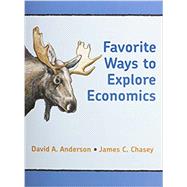Favorite Ways to Explore Economics brings economics to life through structured experiments that students perform in groups and individually. Problem sets and active learning exercises are correlated to chapters and modules in Explorations in Economics to ensure your students have many opportunities to discover how relevant, engaging, and fun economics can be!








